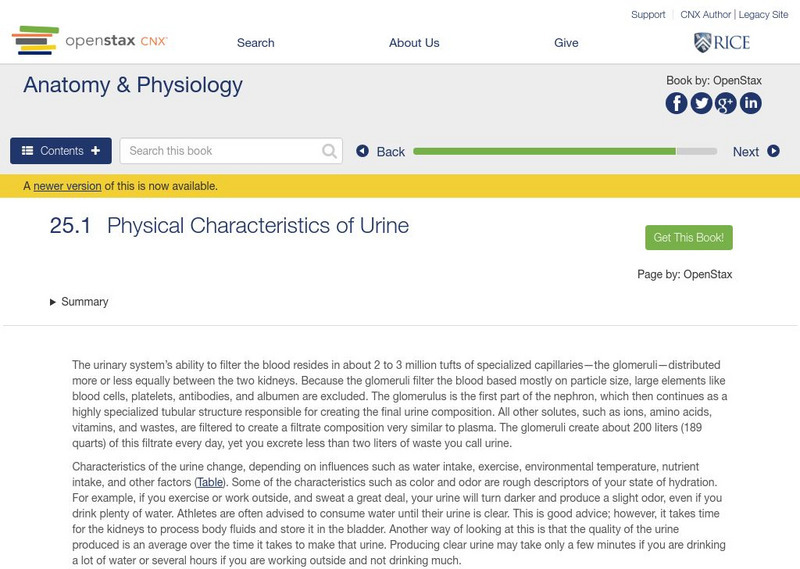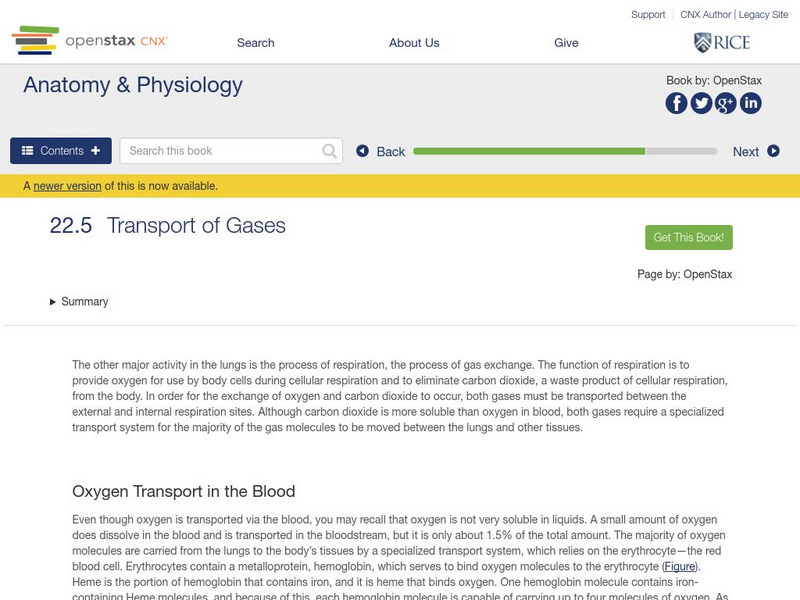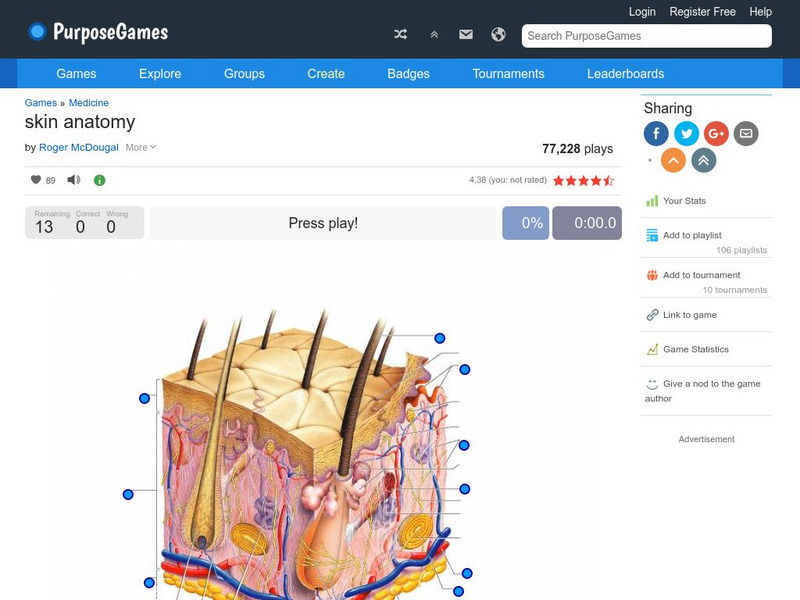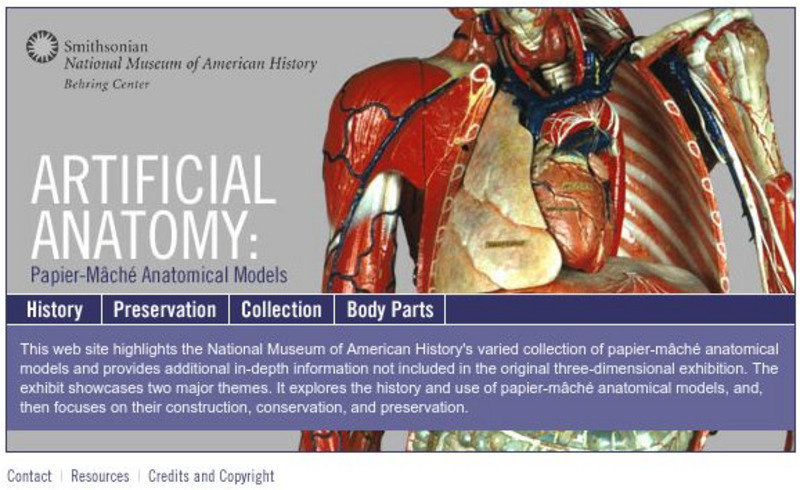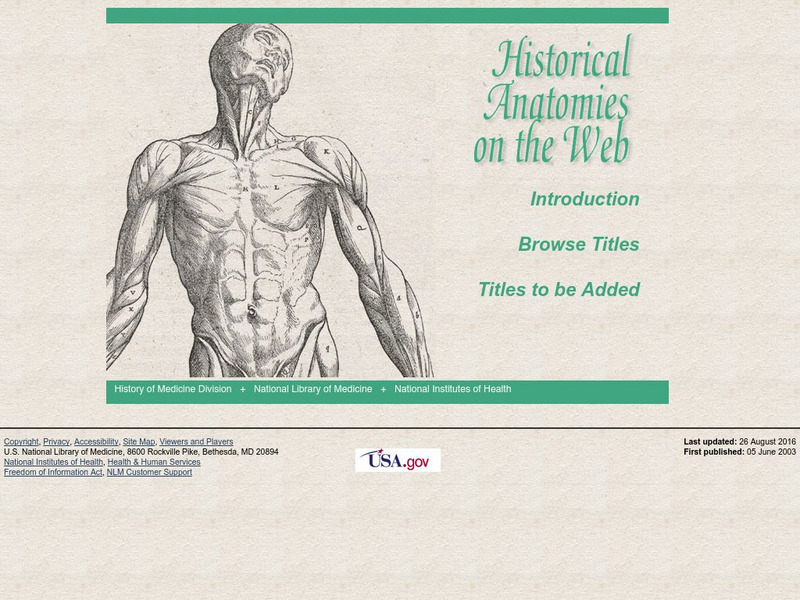Hi, what do you want to do?
Other
Learning Together: Do You Know About Anatomy?
Students can test their knowledge of the human body with these interactive games. Identify the parts of the body by dragging the terms to the appropriate boxes. Quizzes check knowledge on the skeleton, skull, digestive system,...
OpenStax
Open Stax: Anatomy & Physiology: Body Fluids and Fluid Compartments
Learn about the chemical and physical characteristics of the fluids that make up the human body.
OpenStax
Open Stax: Anatomy and Physiology: Types of Tissues
The term tissue is used to describe a group of cells found together in the body. Although there are many types of cells in the human body, they are organized into four broad categories of tissues: epithelial, connective, muscle, and...
OpenStax
Open Stax: Anatomy & Physiology: Energy and Heat Balance
Learn how the human body regulates temperature and explain the significance of the metabolic rate.
OpenStax
Open Stax: Anatomy & Physiology: The Immune Response Against Pathogens
Students learn about the development of immunological competence, and find out about the human body's immune response.
OpenStax
Open Stax: Anatomy & Physiology: Physical Characteristics of Urine
Students learn the chemical make-up and pH of urine in the human body.
OpenStax
Open Stax: Anatomy & Physiology: Transport of Gases
Students learn the principles of oxygen and carbon dioxide transport within the human body, and understand the structure of hemoglobin.
Other
Get Body Smart: Functional Anatomy of Skeletal Muscles
Brought to you by Get Body Smart, students can learn about the human musculoskeletal system through this easy-to-access tutorial. Sections include muscles that act on the arm, shoulder, forearm, wrist, palm, digits, anterior thigh,...
TeachEngineering
Teach Engineering: Human and Robot Sensors
Students are provided with a rigorous background in human "sensors" (including information on the main five senses, sensor anatomies, and nervous system process) and their engineering equivalents, setting the stage for three associated...
National Cancer Institute at the National Institutes of Health
Seer Training Modules: Introduction to the Reproductive System
Self-guided learning activity where students learn about the structure and function of the male and female reproductive systems. There is a short quiz at the end of the lesson to check for understanding.
PurposeGames
Purpose Games: Skin Anatomy
Users will test their knowledge of the anatomy of the skin by taking this 13 question quiz.
Bartleby
Bartleby.com: The Fore Brain or Prosencephalon
This site from Bartleby.com contains an intense, in-depth article from Henry Gray's Anatomy of the Human Body on the fore-brain or prosencephalon. The article discusses the thalamus throughout and touches on its functions as a whole.
Georgia Department of Education
Ga Virtual Learning: Anatomy and Physiology: Senses
Through informational text with printable notes, animations, video clips, and practice problems students discover the function of the sensory structures in the human body.
TeachEngineering
Teach Engineering: Body Circulation
Students are introduced to the circulatory system, the heart, and blood flow in the human body. Through guided pre-reading, during-reading and post-reading activities, students learn about the circulatory system's parts, functions and...
TeachEngineering
Teach Engineering: Biomedical Devices for the Eyes
Students examine the structure and function of the human eye, learning some amazing features about our eyes, which provide us with sight and an understanding of our surroundings. Students also learn about some common eye problems and the...
Smithsonian Institution
National Museum of American History: Artificial Anatomy: Papier Mache Models
Online exhibition examines an interesting sidelight in the history of medicine: the use of papier-mache anatomical models. Learn about the history of medical dissection, why the models were made, and their construction and conservation....
TeachEngineering
Teach Engineering: Do You Have the Strength?
In this activity, students squeeze a tennis ball to demonstrate the strength of the human heart. Working in teams, they think of ways to keep the heart beating if the natural mechanism were to fail. The goal of this activity is to get...
OpenStax
Open Stax: Functions of Human Life
The different organ systems each have different functions and therefore unique roles to perform in physiology. These many functions can be summarized in terms of a few that we might consider definitive of human life. Learn here about the...
OpenStax
Open Stax: Requirements for Human Life
Earth and its atmosphere have provided us with air to breathe, water to drink, and food to eat, but these are not the only requirements for survival. Although you may rarely think about it, you also cannot live outside of a certain range...
OpenStax
Open Stax: Anatomy & Physiology: Skeletal System Functions
This site helps you understand the human skeletal system, a body system composed of bones and cartilage that performs critical functions for the human body.
National Institutes of Health
National Library of Medicine: Historical Anatomies
View a rich collection of illustrated anatomical atlases dating from the 15th to the 20th century. Click on the image to view the book and then click on the link to find more information about the author.
Howard Hughes Medical Institute
Hhmi: Bio Interactive: Explore Your Inner Animals
Did you know parts of our body was inherited from distant animal ancestors? In this interactive students will investigate different anatomical features of the human body to reveal our evolutionary history. Learn how humans share...
Gateway Community College
James Crimando: Superficial Head and Neck: Brief Tutorial
Identify various anatomy of the human head and neck.
Gateway Community College
James Crimando: Major Superficial Muscles: Anterior Trunk and Arm
Learn the anatomy of the human anterior trunk and arm.










